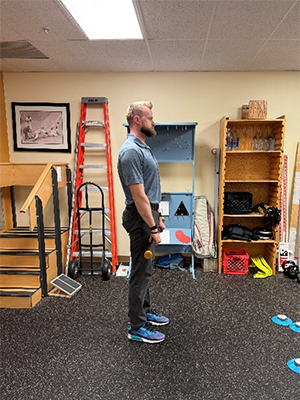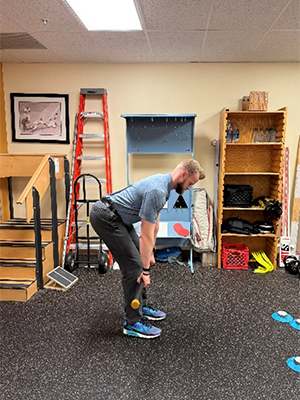A study showed that patients with LBP had significantly lower leg strength than patients without LBP2. It was also shown that trunk strengthening exercises perform better than non-trunk exercises, and better results are obtained with higher intensity. These same exercises and treatments can be used as a preventative measure, not just a reactive measure, and this leads us to the point of this article: you should be strengthening and building muscle in your low back and legs, and the perfect exercise to encapsulate these points is the RDL.
The Romanian deadlift, or RDL, is an exercise that targets the lumbar extensors, glutes, and hamstrings, leading to a stronger lower back. There is a definite technique that goes along with this exercise, but there is a much lower barrier to entry for this exercise than a regular deadlift or an exercise like the Nordic hamstring curl. This exercise can be performed with any type of weight device (barbell, dumbbell, kettlebell, cable, smith machine, etc.) and can be done bilaterally or unilaterally. Since it is a loaded exercise, it will allow you to progressively overload the exercise over time, directly linked to increased strength and hypertrophy. Highlighted below will be how to perform a standard RDL. Feel free to try out other variations once you get a handle on the basic movement pattern.
Begin the movement with an upright posture and initiate the movement by pushing your hips back and letting your spine move towards the floor while maintaining a rigid position. When you are pushing your hips back, think to yourself, “push my tailbone to the ceiling and shift my weight to my heels”; this will help make ensure that you feel the movement in your glutes and hamstrings and feel less stress in your lower back. Make sure this portion of the movement is slow, and you feel a deep stretch in your hamstrings.
Use a controlled motion to stand back up straight once you have as much stretch as you can handle in your hamstrings. You will want to do this by feeling yourself push your hips forward with your glutes, and your spine will return to the starting position without stress. The entire motion should be well-controlled.
The RDL should be a staple exercise in your training program because it builds muscle in your lower back, glutes, and hamstrings, laying the foundation for a strong lower back. If you have any aches and pains preventing you from properly performing this exercise, reach out to your local Athletico today for a free assessment.
*Per federal guidelines, beneficiaries of plans such as Medicare, Medicaid, Tricare, VHA and other federally funded plans are not eligible for free assessments.
The Athletico blog is an educational resource written by Athletico employees. Athletico bloggers are licensed professionals who abide by the code of ethics outlined by their respective professional associations. The content published in blog posts represents the opinion of the individual author based on their expertise and experience. The content provided in this blog is for informational purposes only, does not constitute medical advice and should not be relied on for making personal health decisions.
References:
1. Slade SC, Keating JL. Trunk-strengthening exercises for chronic low back pain: a systematic review. J Manipulative Physiol Ther. 2006;29(2):163-173. doi:10.1016/j.jmpt.2005.12.011
2. de Sousa CS, de Jesus FLA, Machado MB, et al. Lower limb muscle strength in patients with low back pain: a systematic review and meta-analysis. J Musculoskelet Neuronal Interact. 2019;19(1):69-78.
Tanner Neuberger is a Doctor of Physical Therapy and Certified Manual Therapist who specializes in Orthopedics, Sports Rehabilitation, Dry Needling, and Blood Flow Restriction. Tanner graduated from St. Ambrose University in 2016 and was a collegiate athlete in undergrad at the University of Texas of the Permian Basin. Tanner uses his extensive knowledge of manual therapies and strength and conditioning to get his patients back on track and performing better than ever.

 width="900"
height="356"
>
width="900"
height="356"
>


